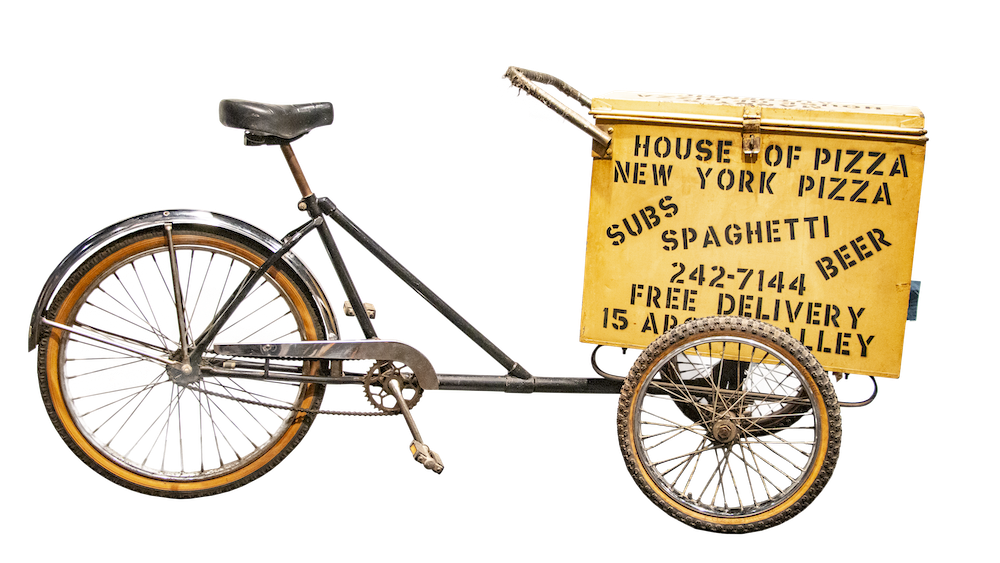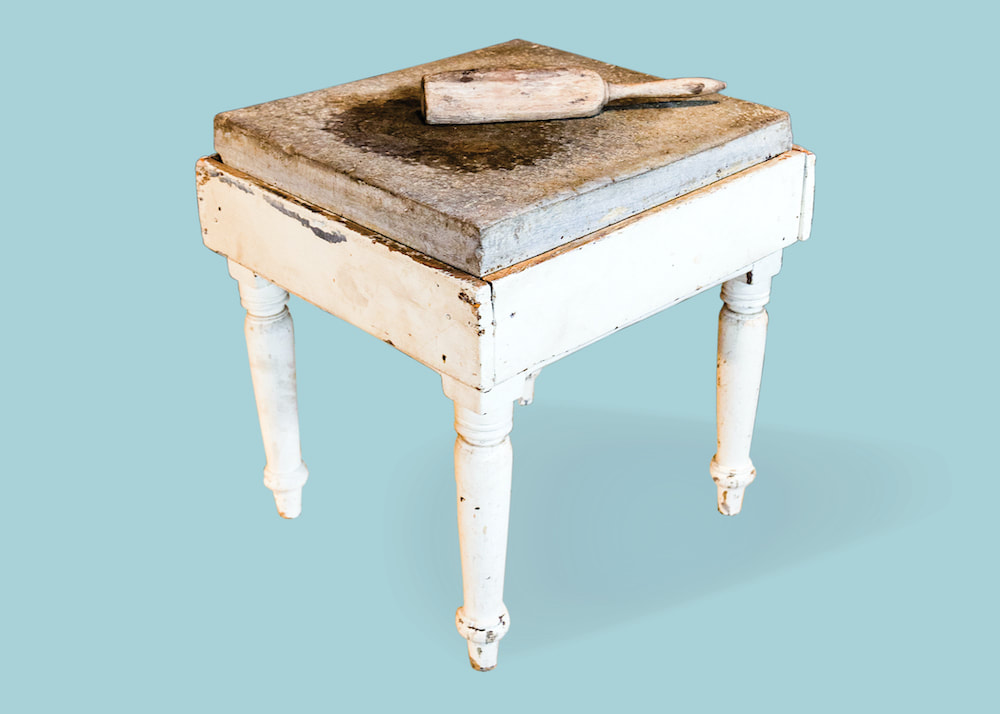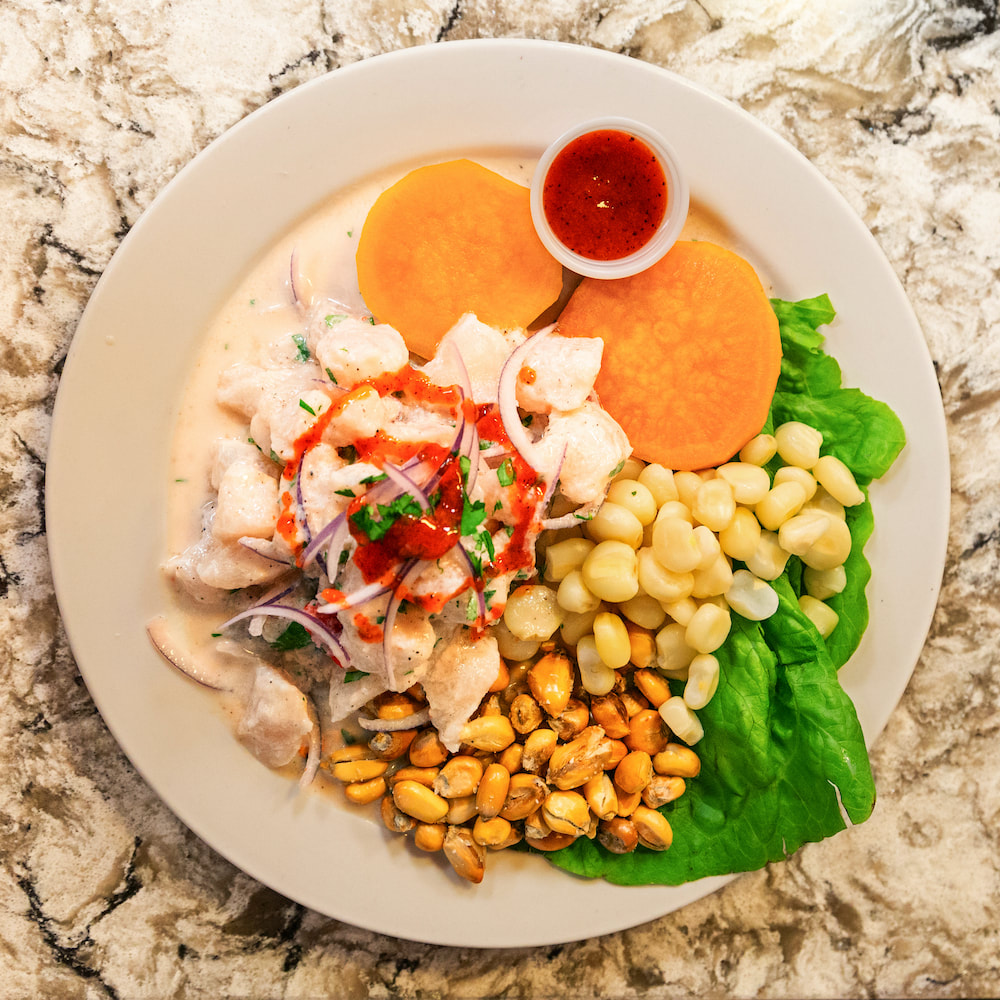
Manny’s House of Pizza Delivery Tricycle, 1980-85 : A tricycle dating 1980 to 1985, used by Nashville restaurant owner Manny Macca, has been donated by Macca to the Museum’s collection. Macca immigrated to the United States as a child from Sicily, Italy, during the 1960s. He moved from New York City to Nashville in 1984 and soon opened Manny’s House of Pizza in the downtown Arcade, where he used this tricycle to make deliveries to nearby customers. (All images and exhibit information provided courtesy TN State Museum).
The Tennessee State Museum explores the rich and diverse history of Tennessee’s food through a new exhibition, Let’s Eat! Origins and Evolutions of Tennessee Food, open until February 2, 2020. The exhibition is presented through eight sections that trace the state’s food from its Southeastern Indian origins to contemporary food festival celebrations. All are complemented by artifacts from the Museum’s collection, digital storytelling, graphics, and location photography.
“The Three Sisters” begins with the story of how Southeastern Indians cultivated crops during the Woodland Cultural Period, planting together beans, corn and squash – referred to as the “three sisters.” This section also highlights the role of strawberries and corn in Native American traditions, tells the story of the state’s Strawberry Festivals and highlights South Pittsburg, Tennessee, site of Lodge Cast Iron’s headquarters and the National Cornbread Festival. “The Buckle of the Barbecue Belt” looks at West European influences on Tennessee Food – the introduction of cattle, pigs and chickens to North America – with visits to Ridgewood Barbecue, Memphis in May and the Kosher BBQ Fest.

Beaten biscuit table and beater, table: 1850-1860, beater: early 20th century : “Beaten biscuits” are a type of biscuit made by physically beating the dough enough to make it rise without using baking powder. The stone for this table was cut at the Tennessee State Penitentiary prior to the Civil War.
In “A Love for Spices,” West African influences on the state are explored, along with the foods prepared by enslaved persons at the Hermitage. Visitors will be introduced to Prince’s Hot Chicken Shack in Nashville and the Four-Way Soul Food Restaurant in Memphis. “Making Do” looks at some of the dishes that emerged when Tennesseans had to feed their families from limited resources in their kitchens. Their stories live on in many foods eaten today. Learn about Florence Mathai and beaten biscuits, festivals that celebrate the wild pungent ramp, “slugburgers” from Pat’s Café in Selmer and renowned fermenter, Sandor Katz. In “Cooking for Others,” the exhibition introduces significant Tennessee cooks Melinda Russell and Rufus Estes and boarding house operator Mary Bobo.
Illustrative of the “evolutions” aspect of the show’s subtitle, the influence of immigrants figures heavily in the exhibition. In the “Immigration and Tennessee Food” section, the Museum highlights several significant locations in Tennessee, including the Swiss Colony of Gruetli, the Hola Hora Latina Festival in Knoxville, the Global Café in Memphis, Varallo’s Chili and the Conexión Américas Communal Kitchen in Nashville. Of course, there are plenty of farms and restaurants preserving iconic methods of food production statewide, and “Preserving Tennessee Food Traditions” spotlights several, including Muddy Pond Sorghum, Helen’s Barbecue, Benton’s Smoky Mountain Country Hams, Boyette’s Dining Room, Vegan Soy Dairy and Book Publishing at The Farm and Cruze Farms Buttermilk. Wrap up the adventure to the exhibition with a survey of food festivals throughout the state.
The Tennessee State Museum is home to 13,000 years of Tennessee art and history. Through six permanent exhibitions titled Natural History, First Peoples, Forging a Nation, The Civil War and Reconstruction, Change and Challenge and Tennessee Transforms, the Museum takes you on a journey – through artifacts, films, interactive displays, events and educational programing – from the state’s geological beginnings to the present day. Additional temporary exhibitions explore significant periods and individuals in history, along with art and cultural movements. The Museum is free and open to the public so go visit!
1 Comment
|
Archives
September 2021
Categories
All
|



 RSS Feed
RSS Feed